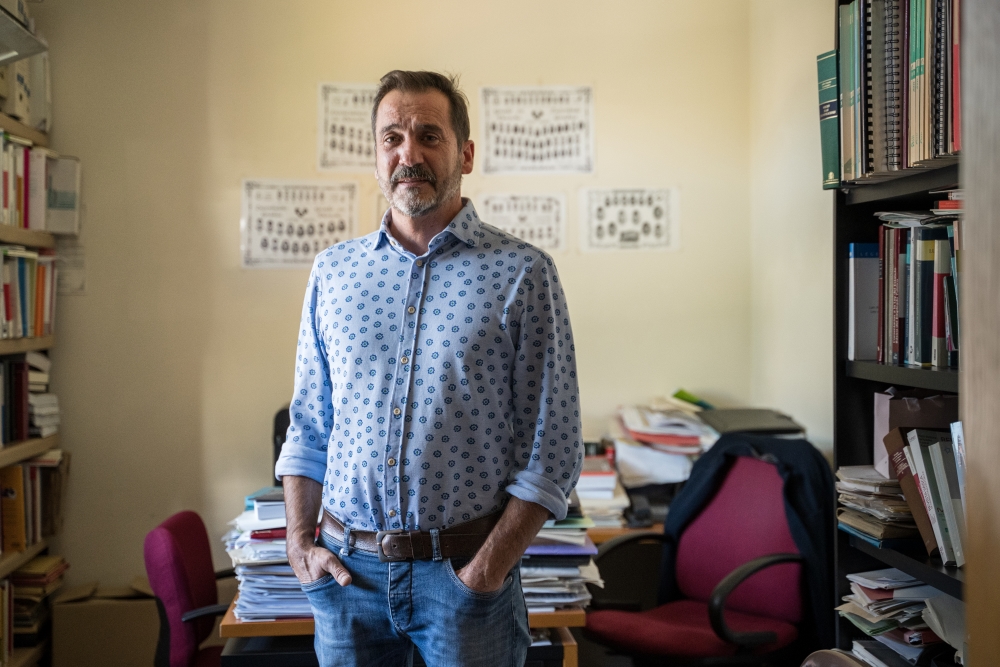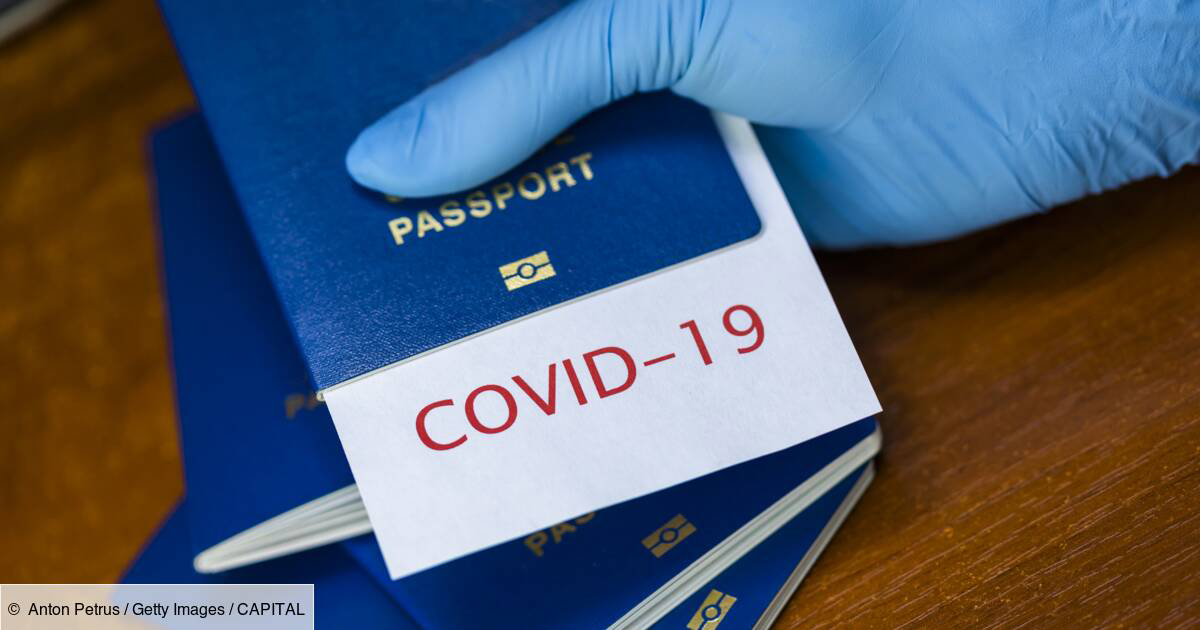"Scientists, especially doctors, have been saying this is going to come for years."
- Professor of Microbiology Guillermo Quindós usually works at the Faculty of Medicine of Leioa. On 13 March, a day before the Spanish Government established the confinement, a couple of truths about the coronavirus was pronounced at the Faculty of Sciences of the UPV/EHU. We have talked to him at length about the COVID-19 pandemic.

-Two truths about coronavirus. Do we miss the truth?
Well, the title of that conversation hadn't been put by me, it was the dean's thing, whoa! More than a lack of truth, let’s say we still have some doubts about the virus: what its receptors are, how it can be blocked, what duration it has on some surfaces…
However, we seem to be investigating this virus faster than any previous one.
Yes. For example, after two weeks we already knew the full genome of the first strains that were isolated (at least that of RNA). In the case of the cousin of this coronavirus (SARS 2002) I think it took two months. And in the case of HIV, in the early 1980s, almost three years. We have much more knowledge than then, which could serve to control this pandemic. There are other factors that have prevented us from controlling faster, but they have more to do with economics than with medicine. Among other things, how is the health system in each country?
This situation is unprecedented. How does this virus differ?
Each coronavirus has its own characteristics. The first ones we met in the 1960s produced mild symptoms of the respiratory tract, colds, colds… Very rarely they caused pneumonia, that is, a serious illness. Well, and they keep getting sick every year. Two or three out of ten colds that we have in winter are produced by coronaviruses, but they're usually not even diagnosed. We later met two other coronaviruses, SARS and MERS. Each of them has its own characteristics, but both cause acute and severe airway disease. This time, SARS-CoV-2, is very similar to SARS, has about 80% of the genome.
But ...
What's wrong with him? It is about as contagious as most flu viruses; between 8 and 9 out of 10 people who get the flu have mild or moderate symptoms, but between 1 and 2 have severe symptoms that require hospitalization. And among them, maybe one in ten has to go to the ICU. That is, 0.5% of all those who get sick. In a highly expanding virus, hospital health care can exceed these percentages. And we know the result: treating patients in the corridors with the most effective measures…The flu affects every year compliance with hospitals, but that has surpassed.
And create more serious cases…
The annual flu causes fewer serious cases for two simple causes: on the one hand, we have vaccines and on the other hand, we have flu drugs. But we don't have specific treatment for this current coronavirus. Many treatments are being used, but we do not know what value each one has. Clinical tests are performed as they are used. In any case, it may be a vaccine within a year.
Former Basque Government Health Advisor Rafael Bengoa said in an interview that developing a vaccine takes seven years to develop the vaccine. Should we trust what is going on in a year?
The development of a vaccine can last up to seven years if the time needed to collect all data on harmful effects or immunisation is taken into account. But the vaccine can be developed in less time. I think Ebola was achieved in 18-24 months. Another thing is that they then have to go through a few sieves, but I think that in the present situation a vaccine that meets certain conditions of immunisation and safety would be used.
In other words, given the seriousness of the situation, could safety requirements be met?
Like others. To accept a drug it is necessary to pass several clinical tests. The latter, which is designated under number IV, takes place when the medicine is on the market in which it is located, and can take a long time. This is the so-called pharmacovigilance phase. Any medicinal product may be withdrawn from the market if, despite having passed all the tests, it is observed that it has significant adverse effects. The same goes for vaccines. Some phases can be summarized, others can’t… Surely the production will give the most problems.
Productions?
Yes. The amount of vaccine you need for the initial tests is small. But then, if you move forward, you have to produce in large quantities, and that takes time. It is possible to get a vaccine in eighteen months, but we may not have enough to include a significant number of people until long after. Priority should be given to certain population groups, which will be improved, for example with Ebola, by establishing a kind of vaccination perimeter around the outbreaks. Finally, it should be noted that for COVID-19 there are two vaccines in Phase I (i.e., in the first phase of human testing) and another 28 in several phases, but most of them starting with animal testing.
In Europe, in January-February, thought was widespread “this is just a hard flu”…
I think we were almost all too optimistic. We thought it would be a bad flu, but it wouldn’t infect so many people, it could be better controlled in the first outbreak… But today you can’t limit a virus. I was asked whether the government's measures seemed appropriate to me. And I answered that, in principle, the measures have been adapted to the situation at the moment, that is, when they were taken, they were appropriate. The problem is that we did not know this coronavirus well and the barriers that have been overcome have been overcome. Now, at a time when we're all more or less confined, we've started to see the light at the end of the tunnel, but we're having a bad time and we're still waiting a few bad weeks before we start to get better. However, there are some indicators of improvement.
Instead of talking about football, we've learned to say zoonoses when we talk about epidemiology. I mean, diseases that go from animals to us. There have been examples of this in the same century: MERS and SARS, influenza A, bird flu, etc. That is what you mentioned. Could this not be foreseen?
We were all in the lurch. The World Health Organization (WHO) has long warned of pandemic X. I mean, we had to be prepared for something like this. What’s more, they say that pandemic X will come almost safe from animals.
Why?
Because it is clear that almost the new diseases that are appearing (I am referring to infectious diseases) are zoonoses. We knew that, of course. Scientists, and especially doctors, have been saying for years that this is going to come. But we live day by day, or more precisely, every day our authorities live in the attempt to adjust the numbers of the economy, and sometimes, to make that adjustment, they weaken health and, above all, research.
Have zoonoses increased or have they always been on the same level as they are now?
We could say that they've gone up as humans entered the surroundings where we weren't before. We're destroying a lot of ecosystems, and we're maintaining contacts with some animals that we just had before.
Is it easy to catch the animals once they have come into contact with them?
No, it's not that easy. Some bacteria and viruses make both animals and humans sick, and surely some species that have long been polluting humans would come from animals. Other species, on the other hand, adapt to an animal and need some change or mutation to produce infections in humans. Thus, zoonoses are more likely to be caused by less stable bacteria or viruses, and usually the most unstable are RNA, such as coronaviruses.
The WHO has been warning for years about the misuse of antibiotics and the appearance of associated superbugs. Was pandemic X thought to be a bacteria and not a virus?
No, it was thought it would be a virus. However, doctors consider the emergence of resistant bacteria as a pandemic, a problem we have had for a long time. Against this, we are trying to rationalise the use of antibiotics until new ones are invented, but there is a problem: private companies do not find it very profitable. I mean, other things give you more benefits. I'm not saying they're not doing anything, but ...
Why is the spread of super-resistant bacteria not a concern about the extent of this coronavirus?
It should create, but it's not that much media. However, science and institutions are working in this field.
Will the coronavirus give us a lesson we won't forget?
I do not think we were in such an extreme situation. The problem of resistant bacteria is chronic, but this is acute and that usually causes greater impact, and also to so many people at once… Anyway, I’m going to tell you a story I tell you many times: when I was 15 years old, in 1975, J.J. The well-known writer Benitez wrote in the newspaper La Gaceta del Norte that in Bilbao 30 people were being killed every day by the flu. It is found that this mortality is higher than the current one. But this is happening in many places at the same time, and the broadcasting capacity of the current media is much greater than that of the 1975 newspapers.
If this is pandemic X, what should we think of pandemic Y? Do we have to be frightened?
We don't know what's going to happen, but we need to give a message of reassurance, we're learning a lot about this pandemic and we're getting more and more training. By the way, we're seeing that if we want to, we can turn other things around, like climate change. And that also has to do with this, because increasing global temperature and increasing deforestation help infectious diseases grow.
Horren arabera, datorren astelehenetik aurrera, orain arte COVID-19ari aurre egiteko neurriak bertan behera geratuko dira Eusko Jaurlaritzaren eskumeneko alorretan. Labi bera ere desegin egingo dute.
That's the summer that we have, and with it the holidays that we usually link to this season, as if they were a reward to everything that has been given throughout the year. And again people want to go away. He wants to be on the famous coast, marvelous nature or the world's... [+]























